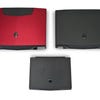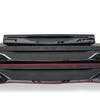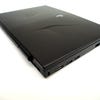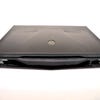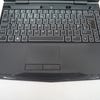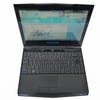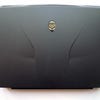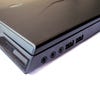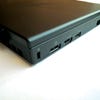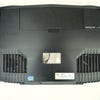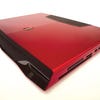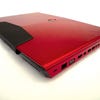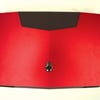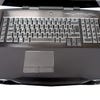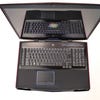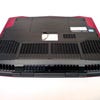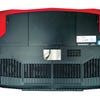Alienware R3 Laptop Reviews: The Ultimate in Mobile Gaming?
From netbook to desktop replacements: can this kit handle cutting-edge PC gameplay?
Do good things really come in threes? When we reviewed Alienware's respectable take on the "Small Form Factor" PC with the X51, we also had a chance to test out a trio of their latest line of gaming laptops. These included the netbook-sized M11x, the feature-rich M17x (including an integrated 3D LED panel), and the back-breaking powerhouse that is the M18x. Each of these being in their third revision, they represent the very best that the company has to offer in the portable space today.
But given the current technical demands of DirectX 11 titles such as Crysis 2 and Battlefield 3, are any of these actually good enough to hold their own with the most cutting-edge releases? Is laptop gaming a viable proposition for the most demanding PC players?
We'll get to that in just a second, but the most pertinent issue for most people on the scout for a new laptop is, of course, price. Tallying up the total cost for each configuration here, it's clear that there's little room for those working with a budget of under £600. The smallest begins at that price point, while the middle entry starts at £1,299, and the largest at £1,699 - all without any extra parts, higher resolution screens or CPU upgrades. Even in their bare-bones forms, each of these laptops guns for the extreme end of the market - with an obvious ambition to deliver the best graphics possible while being grounded by the sobering realities of power consumption, size, weight, noise and heat output.
The Alienware Trio Compared
All the laptops in Alienware's latest wave share a few common threads as far as design and technical ambition go. In terms of raw specs, they each proudly sport variations of the Intel Core i7 processor from the entry level, plus discrete DirectX 11-compatible graphics chips. Courtesy of NVIDIA Optimus support, this will dynamically switch to and from an integrated Intel HD3000 chipset according to which program is being used.
In fact, these GPUs are so powerful that, by default, they're set to automatically scale down their clock speeds whenever the laptops are running straight off the mains, with the energy throughput being simply too high for the laptops to sustain themselves from the battery alone. For laptops determined to squeeze out as much usage time as possible, these power saving tricks are invaluable. The use of 250GB SSDs all round is another plus for battery life (with the option for larger hybrid HDDs available) and has a tangible effect on games like Rage where constant streaming of textures is a necessity.
"Each of these laptops guns for the extreme end of the market - with an obvious ambition to deliver the best graphics possible while being grounded by the sobering realities of power consumption, size, weight, noise and heat output."
There are the similarities in design too, with the token alien head logo emblazoned on each lid and making an appearance as the bespoke power button above each keyboard. There are also two LED-lit speakers at the front undercut by a protruding, glossy lip, each covered, perhaps superfluously, by a meshed design. The whole thing lives up to the extraterrestrial theme the design team set themselves from the company's inception, and it does at least look like something you'd pay that high premium for.
Connectivity is pretty comprehensive between the three. There are two "SuperSpeed" USB 3.0 ports on each laptop, with two headphone sockets, one microphone socket, an Ethernet port, Firewire port, SD card slots, plus options for HDMI 1.4 and DisplayPort output being a commonality. On the M11x, the omission of an optical drive is typical of netbooks designed to the same size specification, and basically makes getting games on there a bit of a hassle unless you've gone with Steam all the way.
The two larger models set themselves apart by adding the flexibility of an eSATA port, an extra USB slot, a SPDIF output and a HDMI 1.3 input, in case you want another device to hijack their LED displays. Naturally, all of these come with integrated 802.11a/g/n wireless cards and Bluetooth support as standard, plus an extra option for Wireless HD to another, presumably larger, monitor or TV, should you want to play games from a distance. All in all, there's not a stone left unturned here.
Opening them up while powered gives you a view of their LED-backlit keyboards. These lights are divided into four segments across its span, and through the built-in AlienFX software can be individually programmed to show off different colours. Much like the X51, this also allows you to program custom presets for each application, where browsing the web can be set to give you a full gamut of colours which gradually oscillate in brightness.
"The AlienFX software allows you to program custom LED presets for each application, where browsing the web can be set to give you a full gamut of colours which gradually oscillate in brightness."


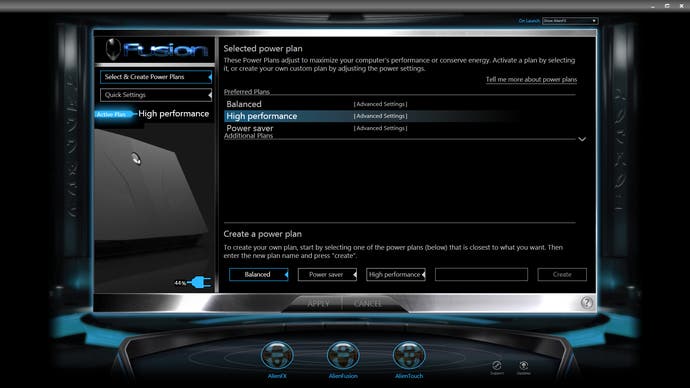
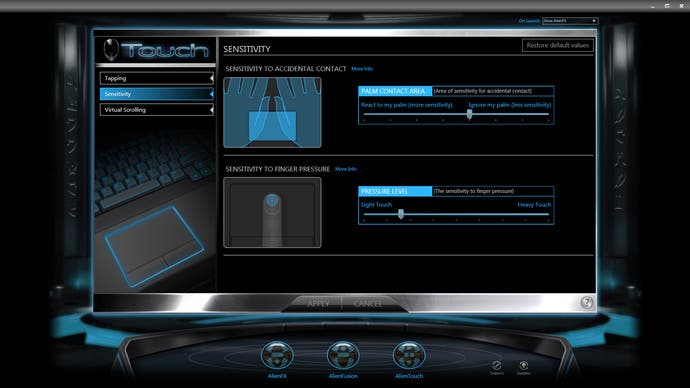
Unfortunately, the use of glossy screens for each unit does have a conflict of interests with the vibrant nature of this backlit keyboard. This is particularly true of night-time play, when you're most likely to need it, as dark scenes just end up revealing a mirror image of the laptop's bottom half when it's enabled in full glory. It's a bit of a shame that no option for matte coating on LED panels is available. In all other situations though, the keyboard is an optional, entertaining extra which has come to set the Alienware brand apart from the competition.
To round off the comparisons, the M11x makes use of a smaller power brick that feels sensible for the light-packing commuter, while a much larger external PSU is needed to give the M17x and M18x the juice they require. No doubt their larger, brighter screens and more power-ravenous processors factor heavily into this, as they each draw around 90WHr and 97WHr from their respective batteries. Interestingly, this is precisely the same block used for the X51 PC, and is a tad too cumbersome to be packed for regular travel.
M11x: The Little Netbook That Could
From here, each laptop treads its own path. Focusing on just the M11x for a moment, we find its rated weight of 2kg to be an incredible achievement given the power it's packing. What we have here is an Intel Core i7-2617M processor clocked at 1.5GHz (ramping up to 2.6GHz in turbo mode), 4GB of 1333MHz DDR3 RAM and an NVIDIA GeForce GT540M graphics chip, which is enough to play all of the most demanding games of the last year.
Speaking briefly on build quality, the rubberised exterior feels solid and makes for a good grip, but tends to leave residual marks quite easily. Nevertheless, this and the heft necessary to draw the screen upwards gives us an impression of robustness - not that we'd consider flinging it against the wall to test this. There are some disappointments though; namely, the uneven balance we have on our unit when placing it on any flat surface, resulting in a slight wobble.
The slightly minimised keys feel a bit uneven at points, and their entirely flat surfaces make them tricky to use, with fingers getting caught quite easily on the pointed edges of adjacent keys. As a result, we don't find that they depress as cleanly or comfortably as other laptop keyboards of even a lower price range, which is a massive shame. The Synaptics trackpad is a pleasure to use though, with its lightly textured surface making it easy to distinguish from the surrounding area when you're using it blind during gameplay. The only other minor grievance we have with it is the proximity of its two USB 3.0 ports, which are just a bit too close together to hold some USB sticks or dongles at once.
Meanwhile, the M11x's glossy-coated, 11.6 inch LED backlit screen is suitably thin, has a resolution of 1366x768 (on par with most "HD Ready" HDTVs) and is contoured by a large, black reflective border. Given the processing power, this proves to be a good fit for games such as Crysis 2 and Battlefield 3, where bumping up the resolution tends to take its toll on the GPU's 2GB worth of RAM. Here, the default resolution is nicely matched with what the hardware can deliver - and failing that, the option for 720p helps to alleviate the strain on fill rate.
However, given its purpose as a gaming netbook, we can't by any means call the quality of the screen itself anything more than average. The biggest problem with it is the contrast ratio, where at any brightness level the colours look dull and undefined most of the time. To add to the problem, both vertical and horizontal viewing angles are also extremely restrictive, meaning the edges of the screen tend to look slightly washed out even when looking at it dead-centre. This ranks as the biggest let-down for the device, and we're surprised that a screen of this quality is being shipped with hardware that purports to be on the cutting edge and is being sold for a premium. It's all the more disappointing because the M11x can actually deliver on some high graphical standards when it comes to playing the games themselves; only half of its promise is lived up to in this regard.
Putting that issue aside, just how far can the hardware be pushed during gameplay? To jump in at the deep end, we test out Crysis 2, set to the maximum 1366x768 resolution with v-sync engaged, and we're surprised by how well it can cope. Even with the optional high resolution texture pack installed, playing around the early, besieged New York stages on the lowest setting gives us performance on the better side of 30FPS. Switching on DirectX 11 features such as tessellation forces the game down to 25FPS and lower at points, making action a bit too choppy to enjoy. The original Crysis performs a little more smoothly on the M11x, but overall this is an impressive result.
"Crysis 2 (DX9) ran at the maximum 1366x768 resolution with v-sync engaged at the better side of 30FPS - deeply impressive stuff for a netbook form-factor."
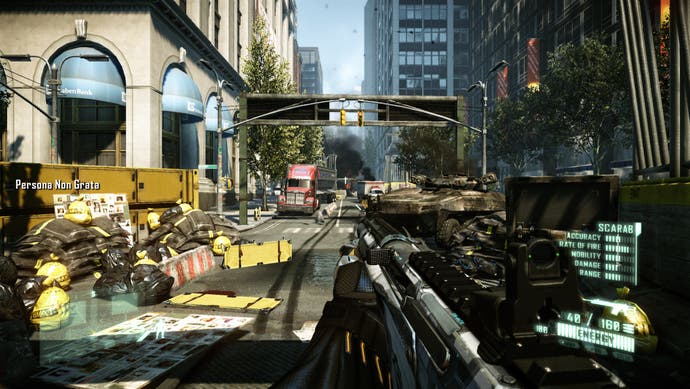

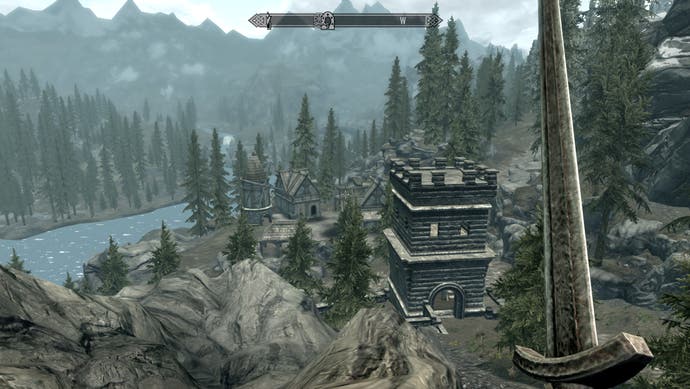

Next up, Battlefield 3's single-player gives us a very similar scenario as far as frame-rate is concerned. Again, when set to the low graphical preset, demanding campaign levels such as Operation Swordbreaker render at a rate just shy of the 30-frame refresh, although improvements come with subsequent missions, where more directed, linear level designs enter the fray. Jumping into multiplayer proves surprisingly more fruitful. Here we can join a game with 32 players engaged on the Caspian Border map and still enjoy the improved AA settings on the Medium preset, without causing the frame rate to dip too far to the nether of 40FPS.
Fans of Skyrim will no doubt be pleased to hear that Bethesda's broad, Nordic fantasy RPG plays at around 40-50FPS on medium settings, although you can squeeze it to the full 60FPS refresh on low. Anything more is sadly a stretch too far, but given the narrow dimensions of the screen itself, the scaled down texture filtering and level-of-detail (LOD) settings tend not to be too noticeable. As a bonus, loading times on entering dungeons are blisteringly fast as a result of the SSD.
Moving on to the realm of real-time strategy, the M11x is up to the task of playing StarCraft 2 on Ultra settings, complete with Blizzard's more complex shader model, resulting in 40FPS on average. However, end-game shenanigans in 4v4 games are an unpleasantly zoetropic affair, making the Medium preset necessary for those looking to attain that crucial 60FPS performance across most match-ups. It's fortunate, though, that Blizzard has always been willing to cater to the lowest common denominator, and the art design still maintains its charm at these lower levels.
Having a little machine deliver big results like these does have implications on battery life, heat and fan noise. Where using the M11x purely for web browsing gives us around ten hours and 30 minutes (medium brightness and volume) off the battery, playing games gives us just over two hours. It's also remarkable how much heat is being channelled through its two air vents, present on the bottom and rear of the device, particularly once the fan kicks into top gear during games like Battlefield 3. It's during these situations that the fan overwhelms the output of the two front speakers, meaning you have to crank them up a bit.
M17x: Performance in 3D Gaming
Next, we move over to the middle entry, the M17x. The external build quality hits a similarly high standard of visual flair and sturdiness, but it's only once you prise the clam open to reveal its keyboard and screen that improvements start to become evident. Gone are the flattened keys and dull LCD panel of its smaller sibling, and in their place are nicely shaped, full-size buttons and a simply gorgeous 17-inch screen with support for NVIDIA's 3D Vision.
Above the keyboard is now room for a stylish, LED-lit media bar featuring all the usual controls for sound and video playback, but also a button which gives you immediate access to the AlienFX program. It's on this bar that we also notice an eject button which controls an optional slot-loading Blu-ray drive to the right side of the device. The coarse texturing of the M11x's track-pad has also been supplanted in favour of a larger, smoother surface, recessed by a millimetre from the palm rest to help navigate without having to constantly refer back at it.
The specifications are a commendable step up too; the M17x contains an Intel Core i7-2630QM, able to clock all the way up to 2.9GHz on turbo, 4GB of 1333MHz RAM, and a dual setup of NVIDIA GTX 460M graphics chips. This doubling allows for twice the overall effective VRAM as well, which now tallies up to 3GB. In the configuration we have, the unit weighs in at 4.39kg (adding .0.13kg for the 3d panel) which is well within the realms of comfort when placed on the lap, and also for general portability.
Naturally for this 3D-enabled screen, refresh rates of up to 120Hz are possible, meaning the world of 120FPS gaming opens wide up - if realistically only with older, classic games. Even for those not interested in stereoscopy or higher frame-rates, the screen provides the full 1920x1080 resolution, some truly superb pixel response and a great contrast ratio too. The only downsides we notice are some minor banding on grey gradients, as seen on the rising smoke on Skyrim's menu screen, and also some pixel noise over densely packed areas of black and white stripes. Input lag is minimal compared to most LCD panels, and although black levels are roughly on par for LED-backlit technology, there are no blemishes in the way of backlight bleed.
The clarity and response of the display serves to bring out the best in the games. We start with Batman: Arkham Asylum to see NVIDIA's 3D Vision in effect, and are not disappointed. While 60FPS on high settings is only possible with 3D turned off, we still manage to achieve almost 40FPS with it enabled, which is enough to carry the effect convincingly. The altered brightness level does take a moment to adapt to once the shutter glasses engage, but image quality is remarkably clear by comparison to 3D offerings on home console platforms, where the framebuffer for each eye is typically lowered in order to meet the hardware's fill-rate. Here, a full 1920x1080 frame is rendered for each eye and the game looks all the better for it.
Battlefield 3 and Crysis 2 both run very smoothly indeed when set to medium, although sadly struggle to handle stereoscopic output. Even with the effect off, we find that the 60FPS target is out of reach mainly due to resolution settings, where rendering at 1920x1080 seems to only allow 30-40FPS during campaign levels. Reducing this to 720p, however, brings it up to par, and remains entirely stable at that maximum level during multiplayer. It's a similar story for Crysis 2 on DirectX 11 mode, which needs to be run at a lower resolution in order to showcase the superior textures and effects on the higher presets.
"1080p native resolution is desirable but this may have an impact if you are looking to play the most demanding games on max settings, or with 3D Vision engaged."
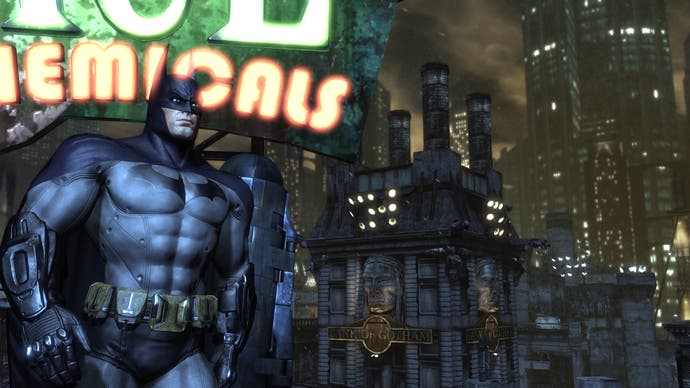
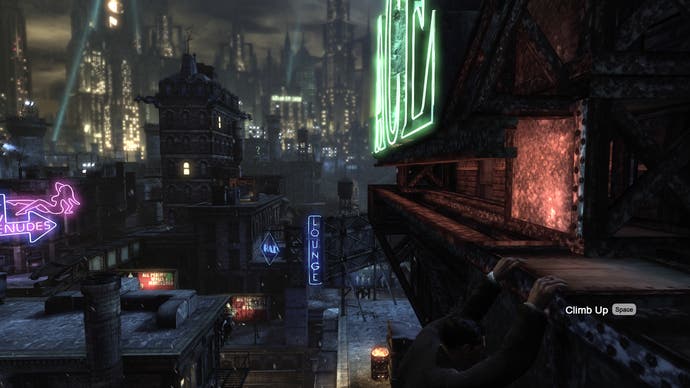

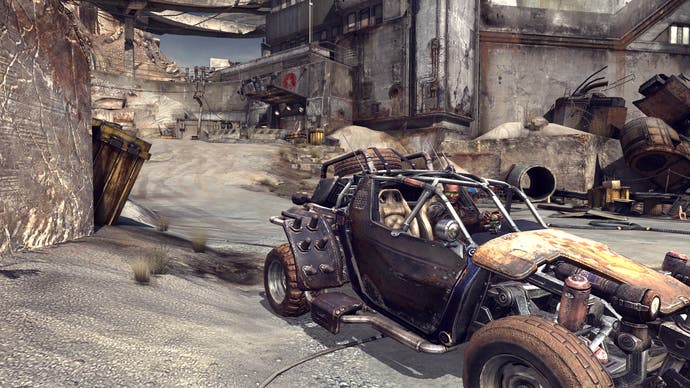
Otherwise, games like Rage fare very well due to included CUDA support on the discrete NVIDIA GPU, where benchmarking the game with GPU transcode enabled gives us 170 megatexels per second. This allows for faster streaming of textures, and in conjunction with the installed SSD practically eliminates the issue of pop-in. Sharp turns around landscapes outdoors can introduce minor bouts of stuttering, but even maxed out, the game can hit 60FPS, and there are no problems around interior environments at all. This is a far cry from the poor level of optimisation the game had on any configuration on release, and we're thoroughly impressed by the results here.
With regards to battery life, the laptop managed to last out for four hours and five minutes while watching video and web browsing, while gaming off the battery gave us just under an hour. The heat output becomes very noticeable due to the way two of its four vents are positioned on the bottom of the device, precisely where your legs are positioned during actual use as a laptop. In terms of noise, the fans kick in at full velocity during games like Battlefield 3 after just 60 seconds, meaning you need to resort to at least 60 per cent volume from the speakers.
M18x: Exceed Until Excess
The last, biggest, and undoubtedly most powerful of the bunch is the M18x. If high-end laptops of this breed are supposed to strike an ideal balance of performance, heat, weight and size, then this gargantuan creation may be pushing its boundaries a little bit. At a daunting starting weight of 5.41kg, it's even heavier than the X51 mini PC we reviewed earlier, making for an uncomfortable experience when literally used as a laptop. Also, we're sad to see that, as it stands, this model currently excludes the option for adding 3D LED panels.
So has anything been added? Over and above the media bar at the top, it does include a customisable set of hot-keys to the left, which are colour coded by LEDs according to their preset. In general, we found that their position at the extreme end of the keyboard made locating the Ctrl and Shift keys less intuitive, but this may simply take some time adapting to. Otherwise, the keys maintain the superior upward-sloping style of the M17x, although this time we see a slight flex to the board when typing at its centre.
Build quality remains creditably high regardless, with the lid taking a good yank to open to reveal the screen. Here we find that the non-3D panel offers slightly worse black levels which, together with the lower pixel density of the display factoring in at 1920x1080, leaves us looking back fondly at the smaller model. This isn't to say the display is bad by any means - the colours are rich, and response times seem equal to the former in practice. Also, the support for 120Hz, potentially allowing for 120FPS in games, is missed, but perhaps not essential in the grand scheme of things.
At first glance the specification of the M18x appears to be quite similar to the M17x, with a matching Intel Core i7-2630QM and 4GB of DDR3 RAM. The big switch comes in the form of the AMD Radeon 6970M with 2GB GDDR as the top-end selection: a single GPU that draws 100W of power, as opposed to the 150W requirement of the dual GTX460M. This change translates to a massive improvement to gameplay in most cases.
For games like Batman: Arkham City and Skyrim we see similarly sky-high results on medium settings, but it's in Crysis 2 that we experience the biggest leap forward. On very high settings, we see the frame rate hold confidently at 60FPS, as opposed to roughly half that on the M17x. This gives us breathing room to experiment, where even bumping it up to extreme doesn't give it too much trouble. Enabling DirectX 11, however, does show its limitations and pulls it back down to the 40FPS mark.
Potentially, this is a cause for concern with games like Battlefield 3 which run exclusively on the DirectX 11 API. In practise, an unerring 60FPS performance is very much sustainable during the Operation Swordbreaker segment, running at the recommended settings with ultra textures, high shadow quality and horizontal-based ambient occlusion (HBAO) all checked. It's a triumphant result, and gives us the confidence to jump into a large multiplayer game with 64 players and never feel like it's the hardware that's holding us back from climbing the scoreboards.
"With the powerful AMD GPU in the M18x, we were able to comfortably play Crysis 2 in DX9 at 1080p60 on very high settings, with DX11 pulling that down to the 40FPS mark."
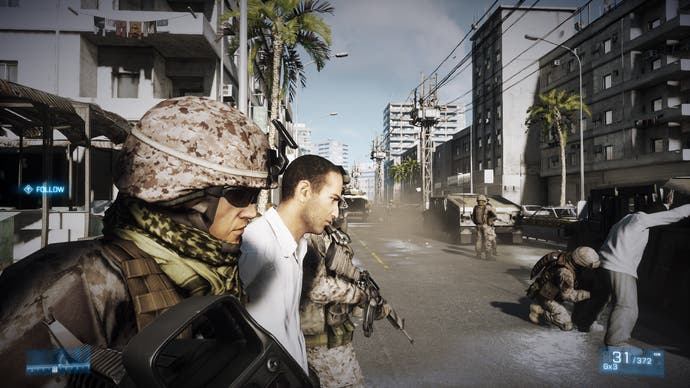

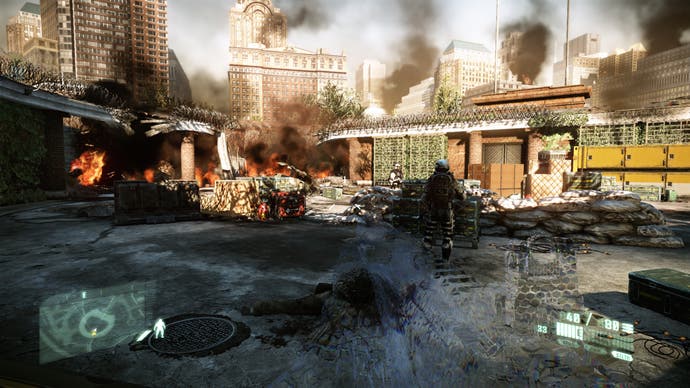
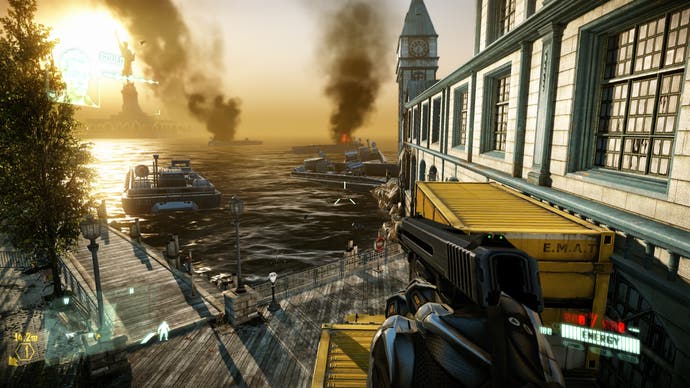
Looking elsewhere, we find Rage suffers ever-so-slightly for its slower texture streaming. This is, we suspect, due to the AMD card's inability to have GPU transcode selected as a result of no CUDA cores being available. Running the benchmark without gives us just 62 megatexels per second, a figure close to the M11x's rating of 57 when the option actually enabled there, and translates to a touch more pop-in while whipping around 180 degree turns in the wasteland. Otherwise, we're still seeing perfect, jitter-free motion during gameplay, with full texture filtering, detail and cache settings enabled and 2 x multi-sample anti-aliasing (MSAA) selected.
The results are superb, but this does come at the biggest expense in terms of power throughput. The M18x uses a high capacity 12-cell Lithium ion battery, rated at 97 WHr, that lasts out for 50 minutes when away from the mains (set to half screen brightness and volume). For web browsing and other non-GPU intensive activities, it's still good for three hours and 30 minutes of use before the ominous little alien icon starts blinking away again. Fortunately, the recharge time here is acceptable; much like the other two laptops, it's able to reach maximum capacity once more in just under two hours.
Alienware's R3 Laptop Range: The Digital Foundry Verdict
In review, you're looking at three stratospherically high-end gaming laptops for whoever is willing to bite the bullet. They each have their place on the market, pinning their corners down with distinct advantages and disadvantages. The M11x is a robust little unit which tows the line between being a power-conservative netbook and a lightweight gaming platform, but the viewing angles and poor contrast ratio of its screen do strike us as a let-down. The uncomfortable, restrictive keyboard design also leaves us wanting more, but on the plus side, it can certainly push those polygons. It plays games like Skyrim at 60FPS at its native resolution without much trepidation, and even Battlefield 3 on the lowest settings, which has to be seen to be believed.
"If you can stomach the very high costs, the M11x and M17x are our picks - the netbook offering has got to be seen to be believed while the 17-inch model is a nice all-rounder with very cool 3D support."
Next down the line is the M17x, which for our tastes strikes the most practical balance between performance, build quality and power consumption, and as an added perk is the only one of the three to offer a 120Hz LED-backlit panel as an option. This is for use with NVIDIA's 3D Vision platform, which is well matched with the laptop's graphical capabilities when playing titles such as Batman: Arkham City at full 1920x1080 resolution. It can also handle demanding DirectX 11 games like Crysis 2 handsomely, but the resulting heat and noise after a few minutes play have us placing it on a table rather than our laps and cranking up the volume to compensate.
We find it a little difficult to recommend the largest sibling, the M18x, without looking back to the M17x's features and design. The overall weight of the unit makes it far less convenient to transport, and the lesser black levels and PPI of its screen do make games seem less crisp when playing up-close. It's by far the most powerful laptop of its size that we've tried though, and playing Battlefield 3 at high settings is a very fluid experience, suggesting it'll be future-proofed on the technical requirement front for a good while yet.
Chalk and cheese, then. If you have the money to spend on laptops of these extravagant extremes, you're certainly covered for options between these three. Detracting points aside, each laptop sets out to squeeze the most from its respective physical dimensions, and it's all delivered in Alienware's signature, otherworldly style with great build quality across the board. For our vote though, experiencing the stereoscopic capabilities of the M17x's screen had our eyebrows raised highest - leaving us with the hope that this will become available to the other models in future revisions.



